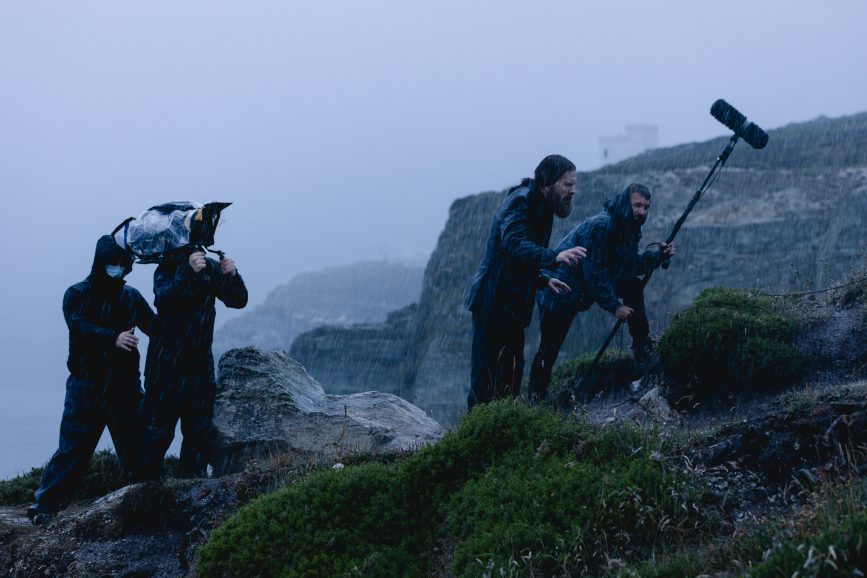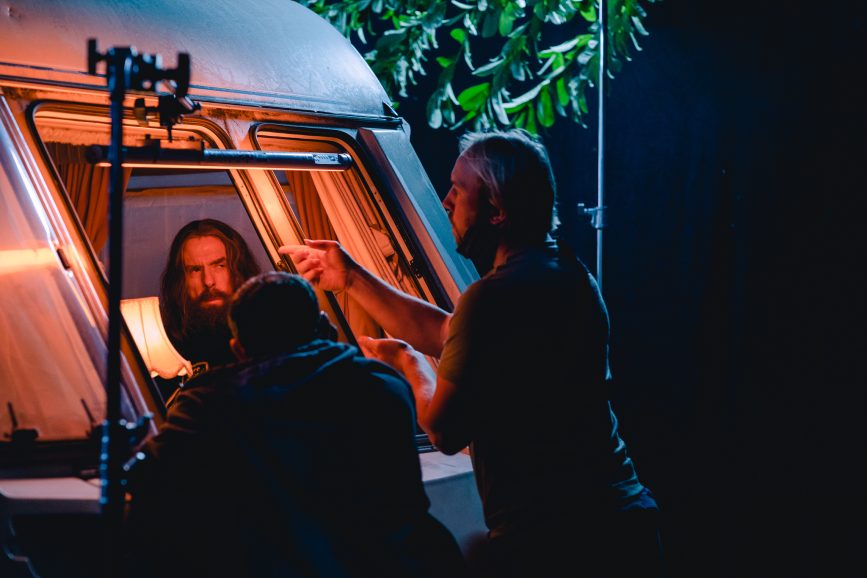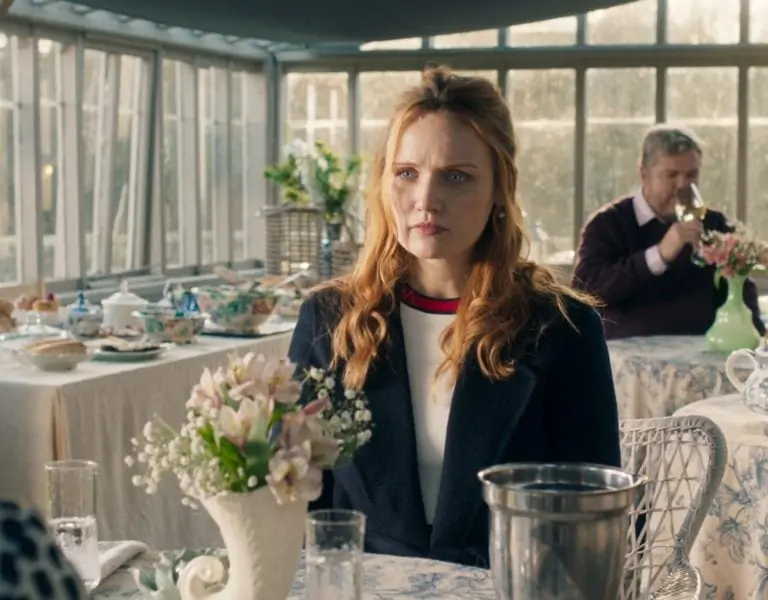Hitting the right notes
Richard Swingle reveals the creative and technical processes behind his lensing of Ian Puleston-Davies’ feature directorial debut, Bolan’s Shoes.
When producer Terri Dwyer of Buffalo Dragon called to arrange an early meeting with Ian Puleston-Davies about his upcoming directorial debut, cinematographer Richard Swingle jumped at the chance to lens the film. Within seconds of their first Zoom meeting, Swingle recalls how he and Puleston-Davies felt an instant creative synergy.
“Ian was just so full of passion, energy and humility, so there was no way to ignore his creative desire to tell this story,” the DP says. “Everything I ever wanted from a project was written in Ian’s script. The characters were so rich and though tragic, there was also humour, depth and redemption, all underpinned by the iconic ‘70s rock era with Marc Bolan’s T. Rex at the height of their fame, seen through the eyes of these two die-hard fans.”


Story on location
The film was shot entirely on location in Liverpool and Anglesey, and boasts the incredible vistas of the island’s South Stack Lighthouse and the headlands of North Wales. “We had to shoot the entire headland sequence in two nights, which happened to be during the summer solstice so it was a complete scheduling nightmare. I asked Ian if he would mind working through that sequence of the script with me to determine if we could squeeze a bit more day or evening either side of the elements taking place at night, so we figured out a way to transition into night as Timothy Spall’s character, Jimmy, finds himself wandering alone in the rain with his younger self stalking and taunting him. That allowed us to shoot day for night for part of the sequence. When we had our five-hour window of night-light, we switched on the ARRIMAX and flooded the whole clifftop with our ‘big moon’. By pure luck the air misted over, giving us a beautiful diffusion that spread the light evenly, saving us time as it meant we needed less lamps lined up closer to the action areas to fill the shadows. This complemented the background for which our gaffer, Paul Benson, had rigged a huge series of LiteMats beneath the crane arm.”
Puleston-Davies knew early on that filming on location with as few distractions to the performances as possible was key. Having read a piece where Swingle expressed his belief that servicing the performances was a key responsibility of any cinematographer, the writer-director knew he had found his DP for Bolan’s Shoes. “I just read his bio and thought, yes! This guy gets it,” Puleston-Davies remembers.
Swingle added how lucky they were to have a camera and lighting team capable of backing them up with this sometimes-frantic approach. “There was one occasion where we were filming an entire five-page sunset scene towards the end of a unit move from North Wales back to Liverpool and due to issues with our tracking vehicle earlier that day, we ended up with about 20 minutes to shoot everything we needed. It was an insane moment and no-one believed we’d pull it off, but thanks to the calmness of the cast and ability of all the technical crew to strip back the on-set kit to a minimum, we were able to fly through the scene with two cameras, sometimes changing setups mid-take. I’m forever grateful for that as it meant the light was changing perfectly in a linear fashion throughout the entire scene, as the sun dipped below the horizon.”


Realism vs. rock ‘n’ roll
Swingle approached all time periods within the script with the same principle when it comes to colour and its ability to portray the story through its subtle influence on the senses. “Understanding the impact that the choice of colours has on a sequence within the film, and also the quantity of colours used in one go, is vital and starts with breaking down the script and peering into the mind of the director. Ian was very clear that the ‘70s time period in the film wasn’t to be a muted, stark portrayal, so we took the approach of being vibrant whilst also respecting the faded atmosphere of that era.
“I did a lot of grade tests with our colourist Tom Cairns at Arteus that we then presented to Ian and that allowed us to find several LUTs to work from on-set depending on whether we were shooting ‘70s, present-day or the rock concerts. One thing that was crucial was to recreate the joy of the children when they first see T. Rex perform and to marry that with the rock show set during the present day. It’s really an opportunity to fully let the characters out of their shells and see their love for the music ring out through the vibrancy of those scenes.”
In contrast, Swingle and Puleston-Davies worked hard to present the subtleties of realism throughout the quieter moments. “This was a lot of fun because each scene with Leanne (Best)’s character had a fractionally different approach depending on the point in her journey that we had reached at the time. Ian’s script had so much nuance and Leanne performed so beautifully that sometimes all I had to do was pay close attention during the rehearsals to see how far she’d push the character or how much she might hold back, and that allowed me to respond with either a softer, more even lighting approach or if the moment called for it, harsher, directional lighting – particularly when she is not in an environment she finds comfortable. Ultimately it was about balancing the character existing naturally within the environment or to appear at odds with it.”


Music and movement
Swingle chose the ARRI Alexa Mini for Bolan’s Shoes and balanced the use of handheld, Steadicam and a more traditional approach for scenes in the vicarage. “In the spirit of justifying our technical choices with the story, we stayed pretty committed to handheld camera work for a lot of the scenes where we’re following Leanne’s character from one stage of her development to the next,” he says. “It’s a means of portraying her freedom when she comes to remind herself who she truly is and the floaty nature of the camera in that mode.
“Also, Steadicam allowed us to drift with her free spirit. This juxtaposes her life in the vicarage where she is withdrawn and hides behind an identity that is untrue to her being so a conventional approach with the camera really allowed us to study her within these scenes and scrutinise the person behind those eyes by giving us the chance to lock onto them. A static camera can be an excellent tool to look into a character’s soul and it was a good reminder that sometimes deciding not to add movement can allow every aspect of the performance to be digestible.”
Bolan’s Shoes is an intimate story that can at times be seen as a character study but also it leaves space for all of the story’s characters to go through their own journey. Swingle summarises: “I feel immensely proud to have worked on this film and it was a true privilege to observe Ian, Leanne and Tim constructing these characters. Ultimately it is those characters that led to my decision-making when approaching the cinematography and when you are paired with someone as talented as Ian Puleston-Davies both as a writer and director, the pool of inspiration runs very deep.”










